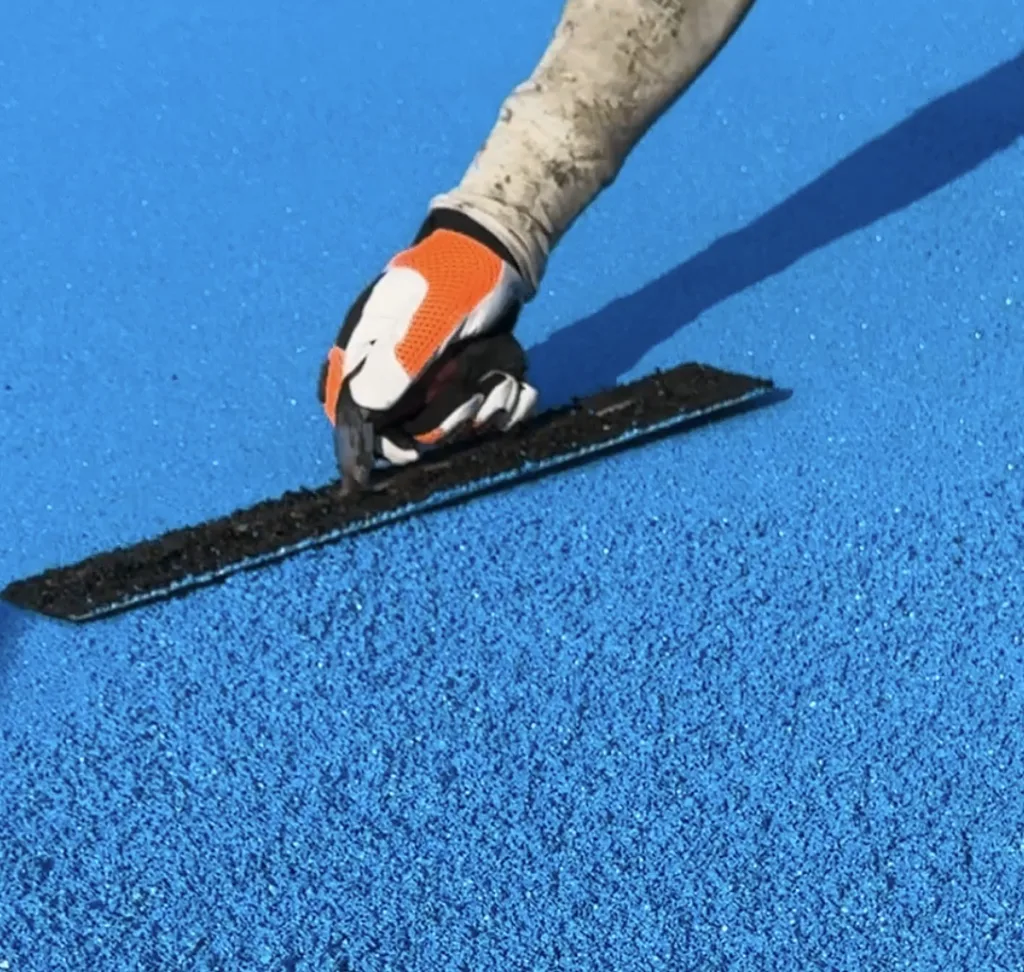Spreading and leveling poured-in-place rubber surfacing is a critical step in the installation process to ensure a smooth and even surface. Here’s a general guide on how to do it:
Materials and Tools:
- Poured-in-place rubber granules
- Binder or adhesive
- Trowels or screeding tools
- Roller compactor
- Straightedges or screed rails
- Measuring tools (tape measure, level)
- Mixing equipment (if applicable)
- Safety gear (gloves, safety glasses)
Procedure:
- Preparation:
- Ensure that the subbase is properly prepared and any necessary priming or binding layers are applied and cured.
- If required, mix the rubber granules with the binder or adhesive according to the manufacturer’s specifications.
- Spreading the Rubber Mixture:
- Spread the rubber mixture evenly over the prepared subbase using shovels or other spreading tools.
- Distribute the mixture to achieve the desired thickness, typically following the specified design or thickness requirements.
- Initial Leveling:
- Use straightedges or screed rails to level the rubber mixture across the surface. This helps in achieving an even thickness throughout the area.
- Screeding:
- Use trowels or screeding tools to further level the rubber mixture. Move the tools back and forth in a sawing motion to create a smooth and uniform surface.
- Ensure that the rubber mixture is evenly distributed, and there are no high or low spots.
- Checking Thickness:
- Periodically check the thickness of the poured-in-place rubber using measuring tools. Adjust the spreading and leveling process accordingly to maintain the specified thickness.
- Compaction:
- Use a roller compactor to compact the rubber mixture. This not only helps in achieving a denser surface but also aids in bonding the granules together.
- Make multiple passes with the roller compactor to ensure thorough compaction.
- Finishing Touches:
- After compaction, perform a final check for any uneven spots or imperfections. Use trowels or other tools to make any necessary adjustments.
- Curing:
- Allow the poured-in-place rubber surface to cure according to the manufacturer’s recommendations. This typically involves keeping the area free from foot traffic and other disturbances.
Always follow the specific guidelines provided by the manufacturer of the poured-in-place rubber surfacing material, as procedures may vary based on the product used. Additionally, adhere to safety protocols and wear appropriate personal protective equipment during the installation process.
See why we are “Vancouver’s Rubber Paving Experts!” Call us today at 778 877 4229 for a Free No Obligation Quote!







